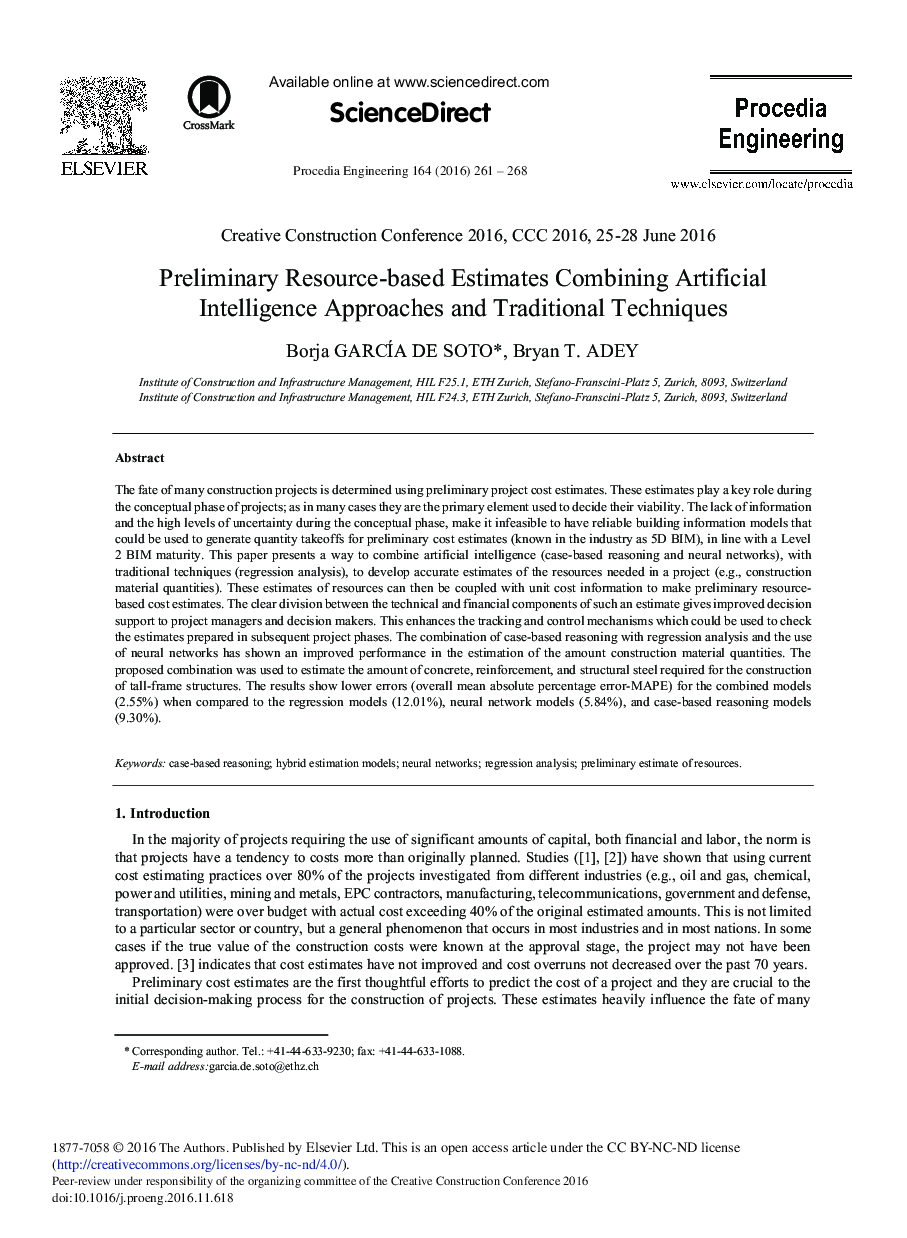| کد مقاله | کد نشریه | سال انتشار | مقاله انگلیسی | نسخه تمام متن |
|---|---|---|---|---|
| 5029481 | 1470662 | 2016 | 8 صفحه PDF | دانلود رایگان |

The fate of many construction projects is determined using preliminary project cost estimates. These estimates play a key role during the conceptual phase of projects; as in many cases they are the primary element used to decide their viability. The lack of information and the high levels of uncertainty during the conceptual phase, make it infeasible to have reliable building information models that could be used to generate quantity takeoffs for preliminary cost estimates (known in the industry as 5D BIM), in line with a Level 2 BIM maturity. This paper presents a way to combine artificial intelligence (case-based reasoning and neural networks), with traditional techniques (regression analysis), to develop accurate estimates of the resources needed in a project (e.g., construction material quantities). These estimates of resources can then be coupled with unit cost information to make preliminary resource-based cost estimates. The clear division between the technical and financial components of such an estimate gives improved decision support to project managers and decision makers. This enhances the tracking and control mechanisms which could be used to check the estimates prepared in subsequent project phases. The combination of case-based reasoning with regression analysis and the use of neural networks has shown an improved performance in the estimation of the amount construction material quantities. The proposed combination was used to estimate the amount of concrete, reinforcement, and structural steel required for the construction of tall-frame structures. The results show lower errors (overall mean absolute percentage error-MAPE) for the combined models (2.55%) when compared to the regression models (12.01%), neural network models (5.84%), and case-based reasoning models (9.30%).
Journal: Procedia Engineering - Volume 164, 2016, Pages 261-268